Last Updated on August 4, 2015
Many people with an interest in natural approaches to health and healing eventually come across the concept of making and drinking fresh, raw, fruit and vegetable juice. There are, however, a few common misconceptions about juicing that result in people wasting their time and money, whilst missing out on much of the health benefits they are expecting.
Here are the key misconceptions I see and which I would like to clear up, at least for you, since you’re reading this.
Misconception: If using a juice extractor, it is a waste to not drink the fibre or pulp which is left over. Therefore it is better to use a blender to make the juice, so that “all this great fibre” remains in the drink rather than being thrown away.
Let’s clear up these points so that you can make a wise choice when it comes to juicing for health:
- The intention with juicing is to separate the juice from the fibre (the pulp). This is why a juice extractor is used. We want to remove the fibre (what is left over, as pulp) for a few reasons. One is that when the fibre is removed you are able to consume much larger quantities of the nutrient rich extractive (the juice). Te fibre creates a lot of bulk, which fills you up. We are extracting the juice from the fibre, so as to avoid fill up on fibre.
Of course, it goes without saying, fibre is an important component of a healthy diet, yet it is not part of a juicing routine. The fibre also requires extra digestive energy to process within the body, which again potentially defeats the purpose of juicing, namely, to get large amounts of nutrient and enzyme-rich (raw) juice into the body, and to have it easily digested and assimilated. - The next point is this. Part of the theory behind juicing as a health practice is the principle of ingesting living enzymes. It is my understanding that high spend blenders (such as a Vitamix and a Blendtec, for example) and commonly available juice extractors (such as centrifugal juicers — the most common and cheapest type of juicer) destroy most (sometimes all) of the living enzymes. This in fact defeats one of the main reasons to make a drink juice in the first place.
If you research the work of the (Max) Gerson Institute you’ll discover that drinking large amounts of raw living fruit and vegetable juice is a key component of their successful cancer treatment program. This program is not, however, as successful when the juice is made using a blender or a high-speed centrifugal juice extractor. I understand they use a rather expensive (US$2000+) Norfolk Press, which I understand leaves more than 90% of the living enzymes in tact.
It is for the above reasons that I would not recommend using a device such as a blender for juicing, if it is your intention to maximize the health benefits and disease curing properties that are promoted with the practice of juicing and juice fasting.
I would recommend a twin gear masticating Tribest Green Star Juice Extractor for this purpose. They are not cheap compared to a centrifugal juicer, but they do last a very long time and the juice is VASTLY superior. I’ve had mine for 10 years and it is still going strong… like the day I got it. As an example of the enzyme activity: carrot or apple juice will stay fresh and bright in colour for a day or two after I juice it. Comparatively, carrot or apple juice from a high speed centrifugal juicer (or, my guess, from a high speed blender such as the Blendtec or Vitamix) will go noticeably brown after 30 minutes to a few hours. The juice goes brown because it is oxidising. The oxidation is slowed down by the presence of living enzymes, and also the fact that the juice has not been forced at high speed through a stainless steel mesh basket.
Here is a picture of a Tribest Green Star Juice Extractor (click this link to see the range on Amazon.com):
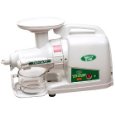
What can I do with the pulp?
If you don’t wish to throw away or compost the fibre (the pulp that is left over) I totally understand. I often feel the same way about it, especially as I use only organically grown fruit and vegetables. So, what to do? You can in fact make all sorts of yummy foods with it. I make a great vegetable pate with the pulp from vegetables such as carrots, beetroot, or pumpkin. I also add it to carrot cake or wholesome muffins. The pulp from fruits, like apples, can also be added to fruit based cakes such as apple spice cake.
So, the pulp need not be wasted. Of course, if you are doing a sustained week or so of juicing for health (a juice fast for instance) there will be way way more fibre on hand than you’re likely to know what do to with. You could try freezing it, although my experience is that I just use what I can, and compost the rest (or I feed it to a worm farm if I have one on hand).
What is a centrifugal juicer?
These are the most commonly available juice extractors. You’ll see large commercial grade versions of them at juice bars. They are the ones that have a circular fine mesh basket inside, which rotates at very high speeds. They juice very quickly, and (relatively to a masticating juicer) they make a lot of noise. Here are pictures of a few centrifugal juicers:
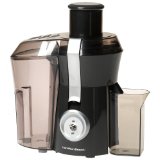
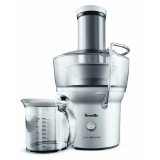
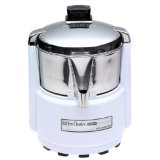
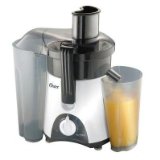
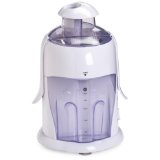
Examples of of juice extractors NOT to buy if you wish to truly JUICE FOR HEALTH

Recent Comments